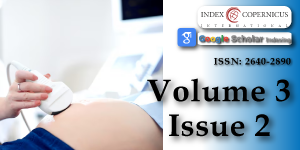Overview on current approach on recurrent miscarriage and threatened miscarriage
Main Article Content
Abstract
Miscarriage is a frequent outcome of pregnancy, with major emotional implications to the couple experiencing such an event. Threatened miscarriage is the commonest complication of early pregnancy and affects about 20% of pregnancies. It presents with vaginal bleeding with or without abdominal cramps. On the other hand recurrent miscarriages are post implantation failures in natural conception. Increasing age of women, smoking, obesity or polycystic ovary syndrome (PCOS) and a previous history of miscarriage are risk factors for threatened miscarriage. The pathophysiology has been associated with changes in levels of cytokines or maternal immune dysfunction. Clinical history and examination, maternal serum biochemistry and ultrasound findings are important to determine the treatment options and provide valuable information for the prognosis. Many surgical and non-surgical interventions are used in the management of threatened and recurrent miscarriages. In this review, we present available evidence-based guidance on the incidence, pathophysiology, investigation and clinical management of recurrent miscarriage and threatened miscarriage, focusing mainly on the first trimester of pregnancy and primary healthcare settings. The review is structured to be clinically relevant. We have critically appraised the evidence to produce a concise answer for clinical practice.
Article Details
Copyright (c) 2020 Sharma B, et al.

This work is licensed under a Creative Commons Attribution 4.0 International License.
RCOG Green Top Guideline. The investigation and treatment of couples with recurrent first-trimester and second-trimester miscarriage, RCOG Green Top Guideline. 2011; 17: 1-17.
Radford EJ, Hughes M. Women's experiences of early miscarriage: implications for nursing care. J Clin Nurs. 2015; 24: 1457-1465. PubMed: https://pubmed.ncbi.nlm.nih.gov/25662397/
Horne AW, Alexander CI. Recurrent miscarriage. J Fam Plann Reprod Health Care. 2005; 31: 103-107. PubMed: https://pubmed.ncbi.nlm.nih.gov/15921544/
El Hachem H, Crepaux V, May-Panloup P, Descamps P, Legendre G, Bouet PE. Recurrent pregnancy loss: current perspectives. Int J Womens Health. 2017; 9: 331-345. PubMed: https://pubmed.ncbi.nlm.nih.gov/28553146/
Homer HA. Modern management of recurrent miscarriage. Aust N Z J Obstet Gynaecol. 2019; 59: 36-44. PubMed: https://pubmed.ncbi.nlm.nih.gov/30393965/
Patki A, Chauhan N. An epidemiology study to determine the prevalence and risk factors associated with recurrent spontaneous miscarriage in India. J Obstet Gynaecol India. 2016; 66: 310-315. PubMed: https://pubmed.ncbi.nlm.nih.gov/27486274/
Garrido-Gimenez C, Alijotas-Reig J. Recurrent miscarriage: causes, evaluation and management. Postgrad Med J. 2015; 91: 151-162. PubMed: https://pubmed.ncbi.nlm.nih.gov/25681385/
Lia J, Gaob JS, Wangc CC, Ngd EH, Wub XK. Evidence-based interventions of threatened miscarriage. World. 2017; 3: 50-59.
Jaslow C, Carney J, Kutteh W. Diagnostic factors identified in 1020 women with two versus three or more recurrent pregnancy losses. Fertil Steril 2010; 93: 1234–1243. PubMed: https://pubmed.ncbi.nlm.nih.gov/19338986/
French DA. A clinician’s approach to the diagnosis and management of recurrent pregnancy loss. Physician Assistant Clinics. 2018; 3: 457-468.
Jefferys A, Vanderpump M, Yasmin E. Thyroid dysfunction and reproductive health. Obs Gynaecol. 2015; 17: 39–45.
Brezina P, Kutteh W. Classic and cutting-edge strategies for the management of early pregnancy loss. Obstet Gynecol Clin North Am. 2014; 41: 1–18. PubMed: https://pubmed.ncbi.nlm.nih.gov/24491981/
Tien JC, Tan TY. Non-surgical interventions for threatened and recurrent miscarriages. Singapore Med J. 2007; 48: 1074-1090. PubMed: https://pubmed.ncbi.nlm.nih.gov/18043834/
Li YH, Marren A. Recurrent pregnancy loss. Aust J Gen Pract. 2018; 47: 432. PubMed: https://pubmed.ncbi.nlm.nih.gov/30114870/
Kutteh WH. Novel strategies for the management of recurrent pregnancy loss. Semin Reprod Med. 2015; 33: 161-168. PubMed: https://pubmed.ncbi.nlm.nih.gov/26036897/
Ford HB, Schust DJ. Recurrent pregnancy loss: etiology, diagnosis, and therapy. Reviews in obstetrics and gynecology. 2009; 2: 76-83. PubMed: https://pubmed.ncbi.nlm.nih.gov/19609401/
Griebel CP, Halvorsen J, Golemon TB, Day AA. Management of spontaneous abortion. Am Fam Physician. 2005; 72: 1243-1250. PubMed: https://pubmed.ncbi.nlm.nih.gov/16225027/
Sotiriadis A, Papatheodorou S, Makrydimas G. Threatened miscarriage: evaluation and management. BMJ. 2004; 329: 152-155. PubMed: https://pubmed.ncbi.nlm.nih.gov/15258071/
Harrison RF. A comparative study of human chorionic gonadotropin, placebo, and bed rest for women with early threatened abortion. Int J Fertil Menopausal Stud. 1993; 38: 160-165. PubMed: https://pubmed.ncbi.nlm.nih.gov/8348164/
Arck PC, Rücke M, Rose M, Szekeres-Bartho J, Douglas AJ, Pritsch M, et al. Early risk factors for miscarriage: a prospective cohort study in pregnant women. Reprod Biomed Online. 2008; 17: 101-113. PubMed: https://pubmed.ncbi.nlm.nih.gov/18616898/
Brenner B, Bar J, Ellis M, Yarom I, Yohai D, Samueloff A et al. Effects of enoxaparin on late pregnancy complications and neonatal outcome in women with recurrent pregnancy loss and thrombophilia: results from the Live-Enox study. Fertil Steril. 2005; 84: 770-773. PubMed: https://pubmed.ncbi.nlm.nih.gov/16169422/
Hendriks E, MacNaughton H, MacKenzie MC. First Trimester Bleeding: Evaluation and Management. Am Fam Physician. 2019; 99: 166-174. PubMed: https://pubmed.ncbi.nlm.nih.gov/30702252/
Devaseelan P, Fogarty PP, Regan L. Human chorionic gonadotrophin for threatened miscarriage. Cochrane Database Syst Rev. 2010; 5: CD007422. PubMed: https://pubmed.ncbi.nlm.nih.gov/20464754/
Coppola PT, Coppola M. Vaginal bleeding in the first 20 weeks of pregnancy. Emerg Med Clin North Am. 2003; 21: 667-677. PubMed: https://pubmed.ncbi.nlm.nih.gov/12962352/
Nybo Andersen AM, Wohlfahrt J, Christens P, Olsen J, Melbye M. Maternal age and fetal loss: population based register linkage study. BMJ. 2000; 320: 1708-1712. PubMed: https://pubmed.ncbi.nlm.nih.gov/10864550/
Brezina PR, Kutteh WH. Recurrent early pregnancy loss. In Clinical Reproductive Medicine and Surgery. 2013; 197-208.
Mezzesimi A, Florio P, Reis FM, D'Aniello G, Sabatini L, et al. The detection of anti-beta2-glycoprotein I antibodies is associated with increased risk of pregnancy loss in women with threatened abortion in the first trimester. Eur J Obstet Gynecol Reprod Biol. 2007; 133: 164-168. PubMed: https://pubmed.ncbi.nlm.nih.gov/17046145/
van der Spuy ZM, Dyer SJ. The pathogenesis of infertility and early pregnancy loss in polycystic ovary syndrome. Best Pract Res Clin Obstet Gynaecol. 2004; 18: 755–771. PubMed: https://pubmed.ncbi.nlm.nih.gov/15380145/
Mouri M, Rupp TJ. Threatened Abortion. InStatPearls [Internet] 2019 May 6. StatPearls Publishing.
Qureshi NS. Treatment options for threatened miscarriage. Maturitas. 2009; 65 Suppl 1: S35-41. PubMed: https://pubmed.ncbi.nlm.nih.gov/19945236/
Oates-Whitehead RM, Haas DM, Carrier JAK. Progestogen for preventing miscarriage. In: Cochrane Library. Chichester: Wiley, 2003. CD003511. PubMed: https://pubmed.ncbi.nlm.nih.gov/14583982/

